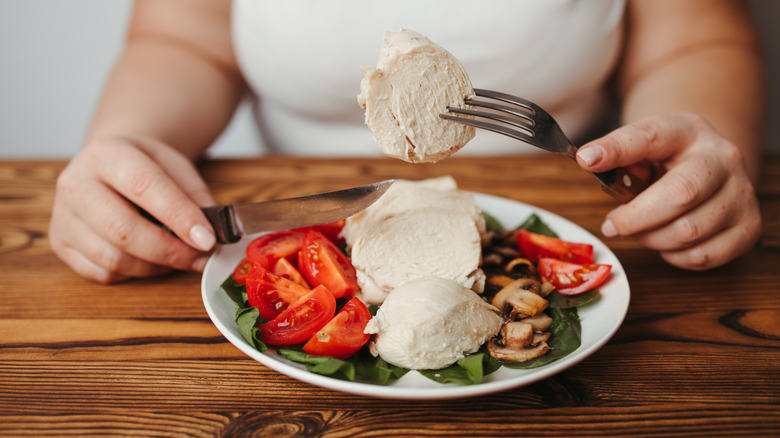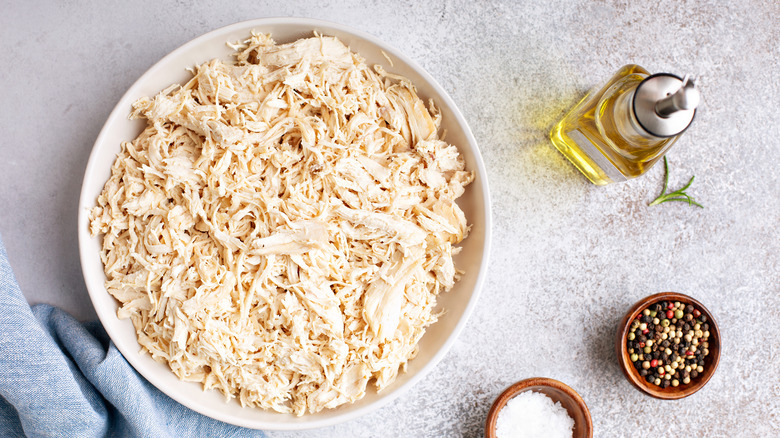The Biggest Reason Your Chicken Is Rubbery
If there's anything worse than dry or unseasoned chicken, it's rubbery chicken for sure. It can happen to the best of us: you follow the recipe precisely and maybe even set a timer for extra precision. Yet when you go to take a bite, the meat is as chewy as can be. According to Greatist, this sad state is usually an indicator of overcooked chicken. And while that's better than raw chicken, it's still pretty disappointing. Why does this happen? The longer you leave the chicken on the stove or in the oven, the more moisture it loses and the greater the chance you end up with that dreaded rubbery chicken.
There are also two types of chicken, generally known as white striping and woody breast, that are prone to rubberiness regardless of whether or not you overcook them. A chicken with white striping contains stripes of fat along with the muscle fibers. A chicken with a woody breast is when those same muscle fibers are knotted. This can only be identified by touch, not by look, making the process of avoiding them that much more complicated. The rule of thumb for avoiding this, courtesy of Miss Vickie, is to only use organic chicken that is no bigger than 7 pounds.
How to fix rubbery chicken
If you're stuck with rubbery chicken, all is not lost. Whether it be due to unintentionally buying a chicken with white striping, or from accidentally overcooking the meat, a rubbery chicken is entirely salvageable. You'll have to change up your original recipe in favor of a new one, but it's not so bad.
Bon Appétit explains that this fix all comes down to replenishing what's lost. Chicken is made up of three basic elements: protein, fat, and liquid. Fat and liquid are absent from rubbery chicken, so in order to restore that balance, it's essential to add those two factors back in.
An easy way to do so is by shredding the chicken to break down its protein fibers, then mixing the result with stock and lard. Shredded chicken lends itself to a variety of recipes, including filling in dumplings or ravioli. You could easily use it to make pâté or chicken salad, too. However, Bon Appétit strongly advises against putting it in soup, as it only has liquid, but not nearly enough fat. Ultimately, so as long as you're adding a sufficient amount of both fat and liquid, there's no use tossing your rubbery chicken.

